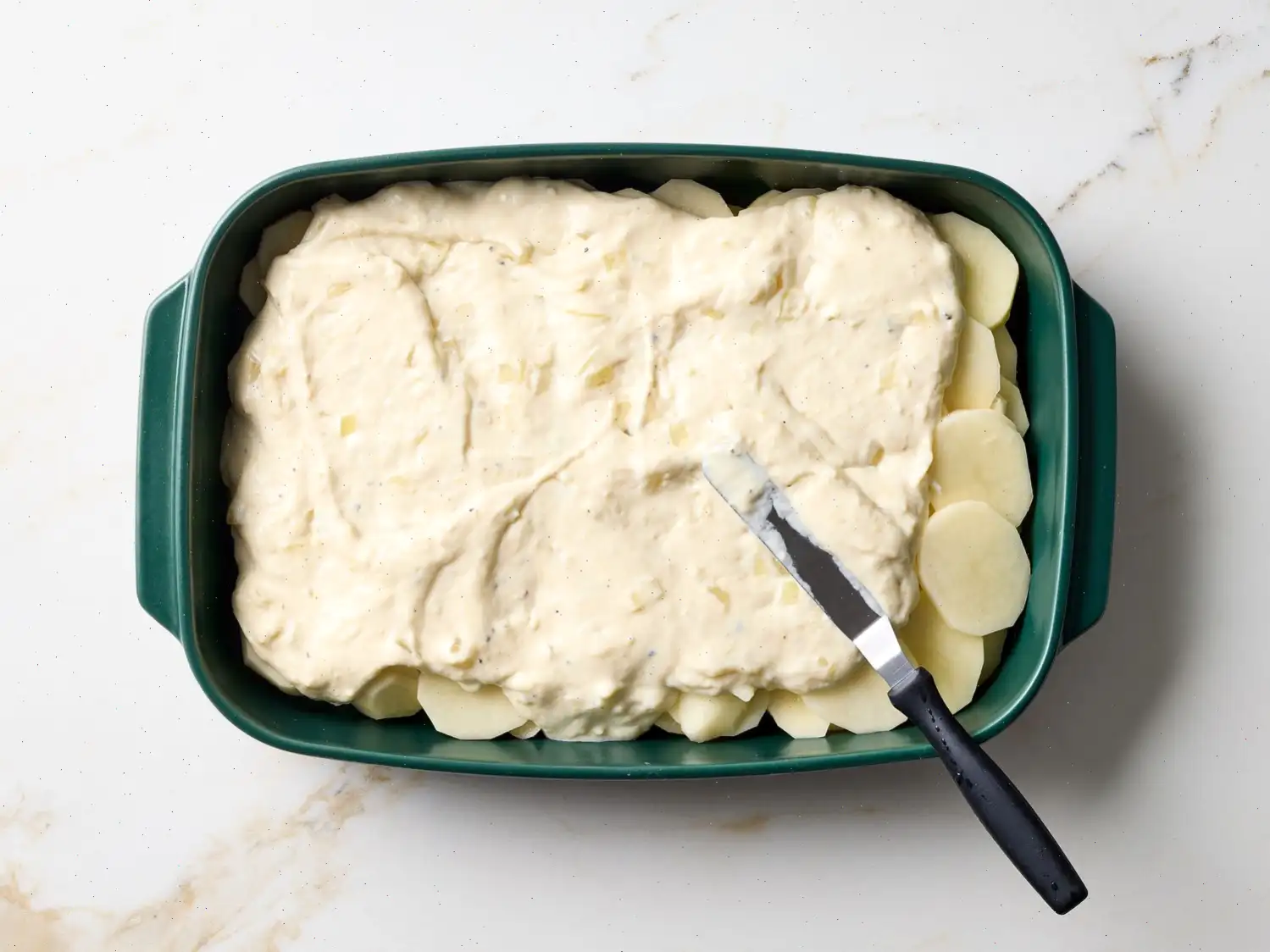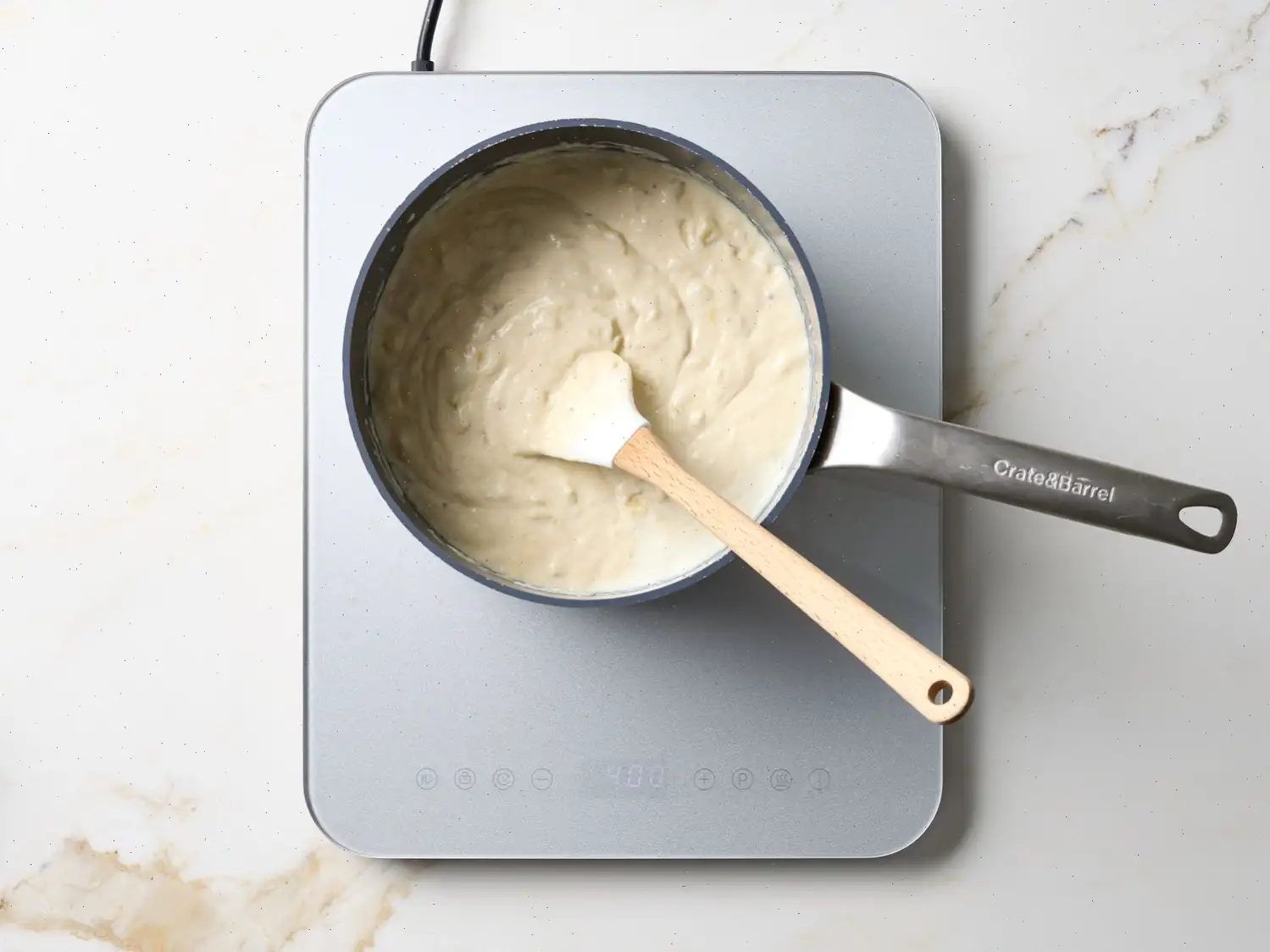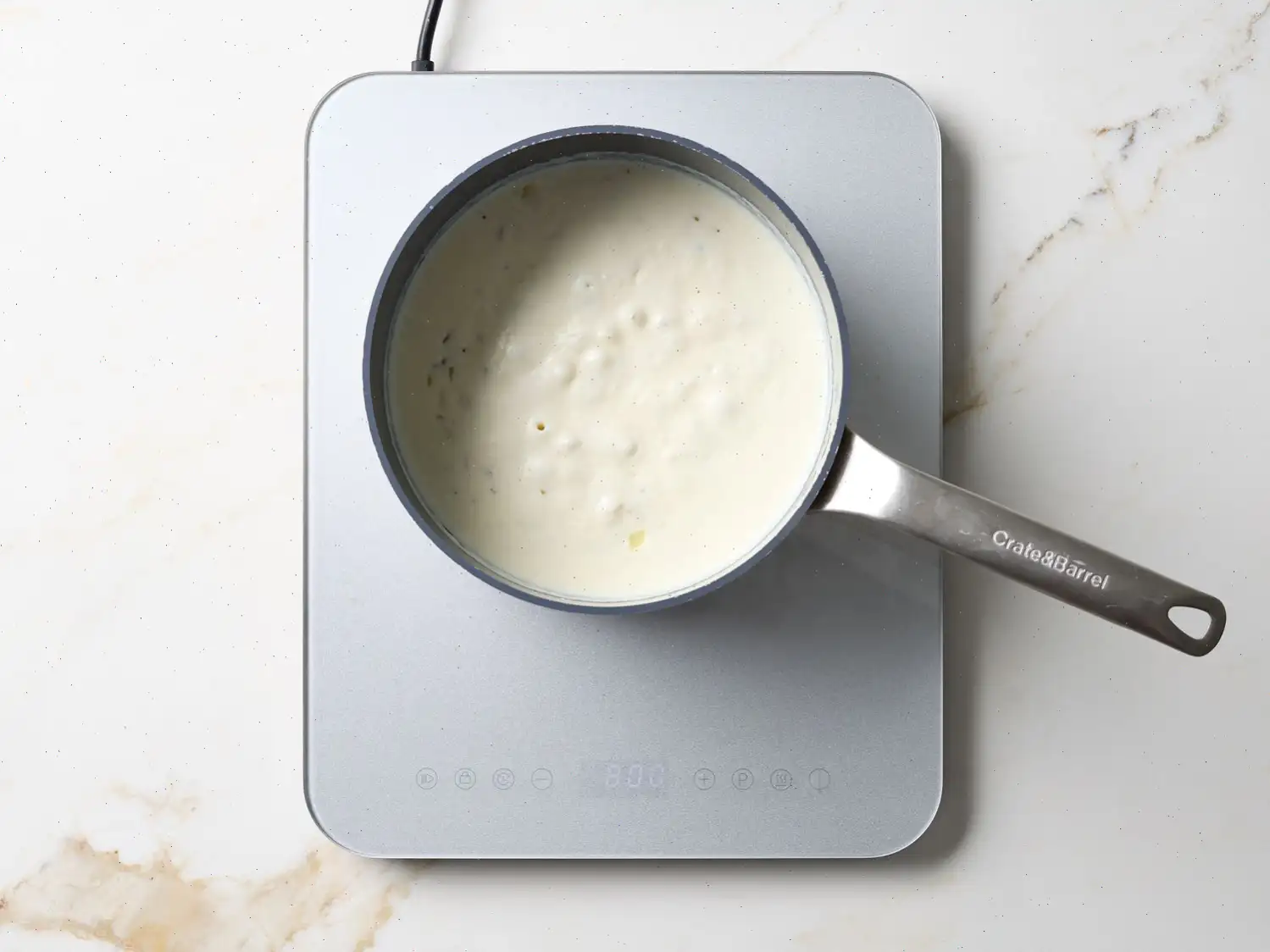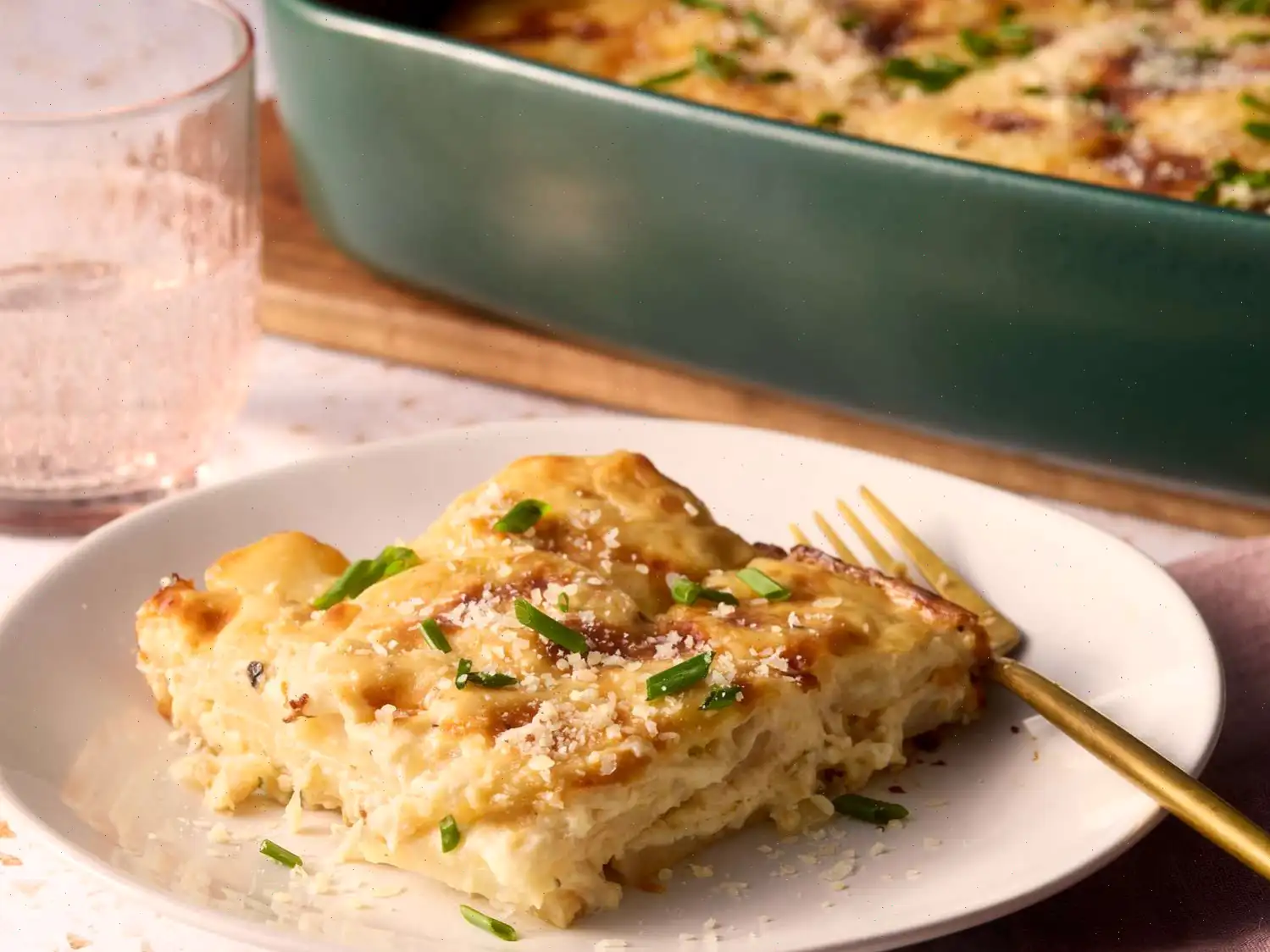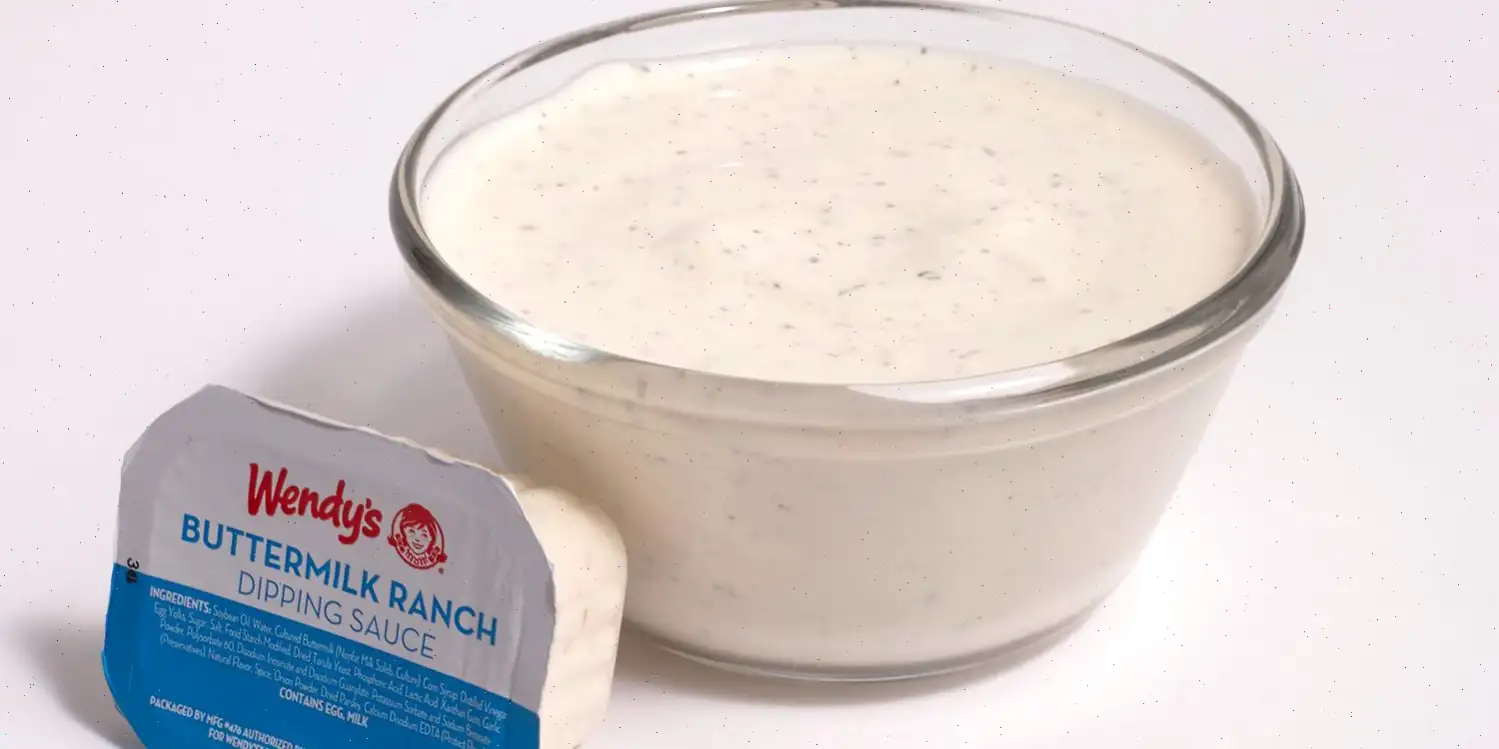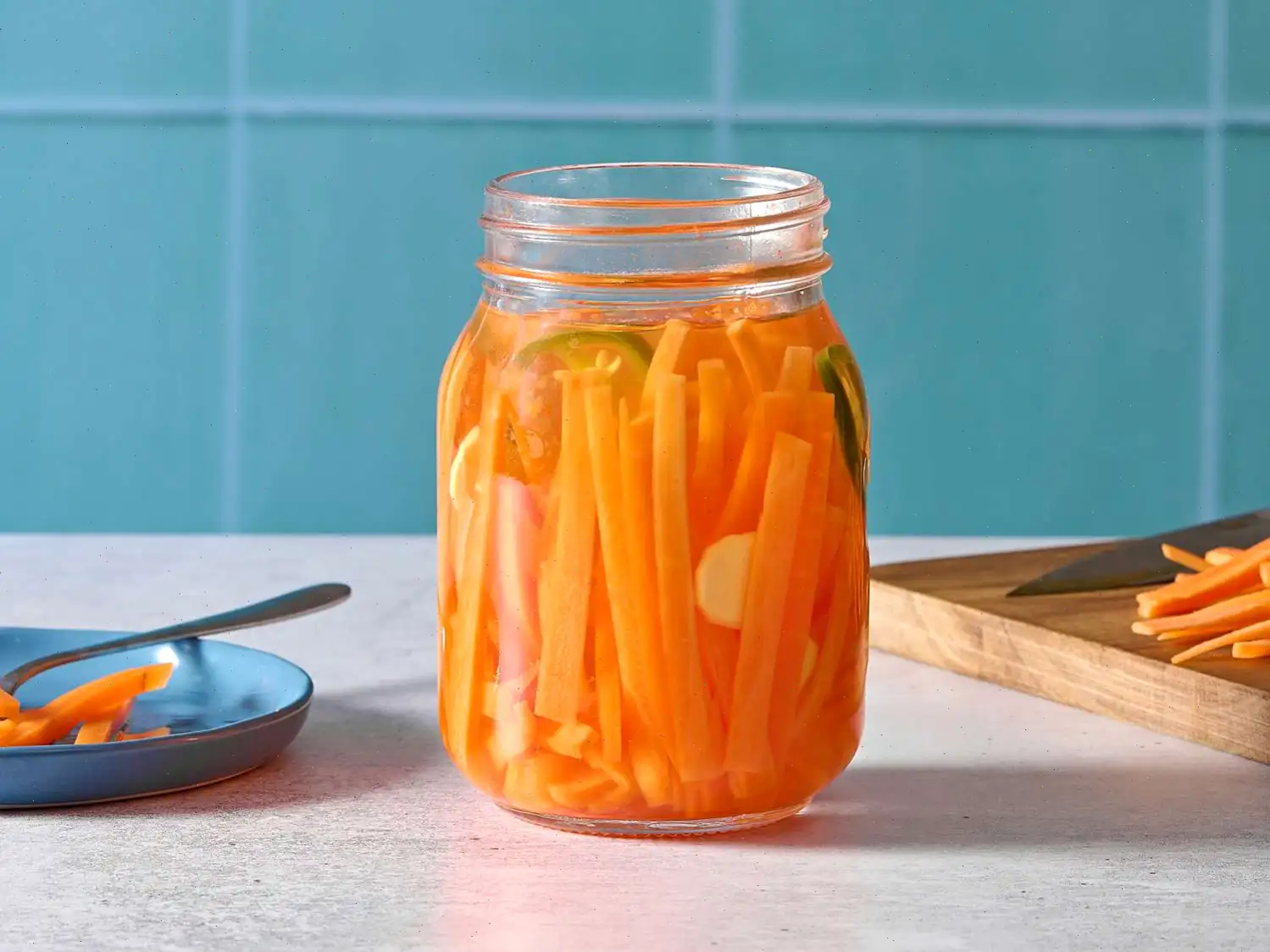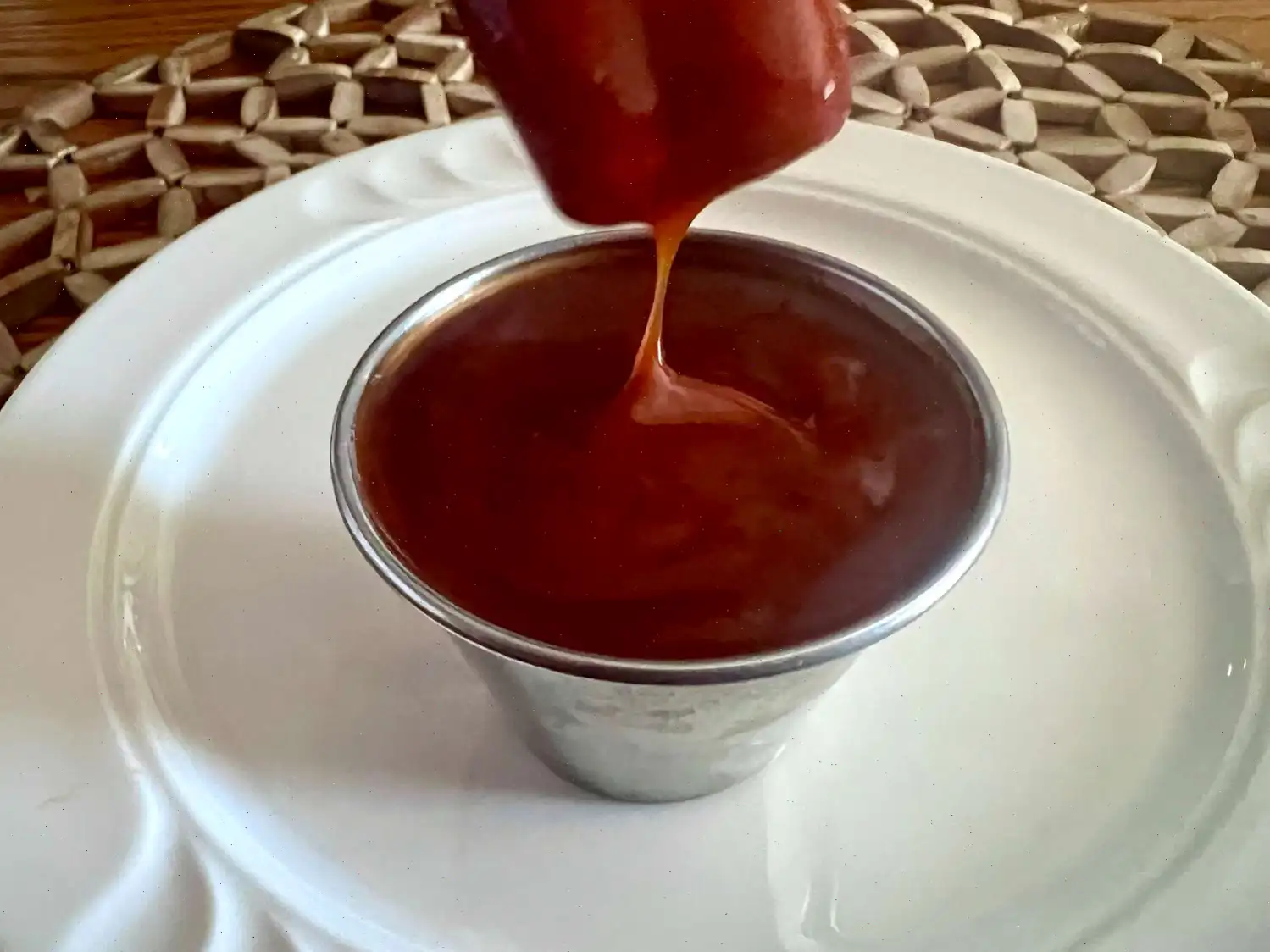
Caesar Scalloped Potatoes Recipe
Ingredients:
- 1/4 cup butter
- 1 cup chopped onion
- 3 cloves garlic, minced
- 1/4 cup all-purpose flour
- 1/2 teaspoon salt
- 1/2 teaspoon freshly ground black pepper
- 2 1/2 cups half-and-half
- 2/3 cup freshly grated Parmesan cheese, plus more for garnish
- 1 tablespoon Worcestershire sauce
- 1 tablespoon Dijon mustard
- 2 teaspoons lemon zest
- 1 tablespoon lemon juice
- 2 1/2 pounds russet potatoes, peeled and sliced 1/8-inch thick
- Chopped fresh chives for garnish
Directions:
- Preheat your oven to 350F (175C) and grease a 9x13-inch baking dish.
- In a saucepan, melt the butter over medium heat. Add the chopped onion and minced garlic, and cook until softened and translucent, about 6 minutes.
- Stir in the flour, salt, and pepper. Cook, stirring constantly, for 1 minute to create a roux.
- Slowly add the half-and-half, stirring continuously, and cook until the mixture thickens and starts to bubble, about 4 minutes.
- Stir in the grated Parmesan cheese, Worcestershire sauce, Dijon mustard, lemon zest, and lemon juice. Continue stirring until the cheese is melted and the sauce is smooth, about 1 minute.
- Arrange half of the sliced potatoes in the prepared baking dish. Pour half of the sauce over the potatoes and spread it evenly.
- Repeat the layering process with the remaining potatoes and sauce. Cover the dish with aluminum foil.
- Bake in the preheated oven for 45 minutes. Then, uncover the dish and bake for an additional 40 to 45 minutes until the potatoes are tender and golden.
- Once done, remove from the oven and let the dish stand for 10 minutes before serving.
- Garnish with extra Parmesan cheese and freshly chopped chives for a fresh finish.
Nutrition Facts (per serving):
- Calories: 243
- Fat: 7g (9% of daily value)
- Saturated Fat: 4g (20% of daily value)
- Cholesterol: 19mg (6% of daily value)
- Sodium: 364mg (16% of daily value)
- Total Carbohydrates: 38g (14% of daily value)
- Dietary Fiber: 4g (14% of daily value)
- Total Sugars: 3g
- Protein: 7g (15% of daily value)
- Vitamin C: 15mg (16% of daily value)
- Calcium: 121mg (9% of daily value)
- Iron: 2mg (11% of daily value)
- Potassium: 904mg (19% of daily value)
Note: Percent daily values are based on a 2,000 calorie diet. Your daily values may be higher or lower depending on your calorie needs.


By Juliana Hale
Origin and History
The Caesar Scalloped Potatoes recipe is a modern twist on the classic scalloped potatoes, with flavors inspired by the popular Caesar salad. Although the exact origin is unclear, it is likely an innovative variation developed in the United States, where both Caesar salad and scalloped potatoes are beloved side dishes. The inclusion of ingredients like Parmesan, Dijon mustard, and Worcestershire sauce brings a distinctive Caesar salad-inspired taste to the traditional comfort food. While the Caesar salad itself was created by Caesar Cardini in the 1920s in Tijuana, Mexico, this variation emerged much later as part of the trend to experiment with classic recipes.
Regional Characteristics
Caesar Scalloped Potatoes can be found in various regions across the United States, particularly in restaurants and homes that enjoy fusion cuisine. While traditional scalloped potatoes are a staple in American kitchens, this version stands out due to its rich, tangy Caesar-inspired flavor profile. The use of Worcestershire sauce, lemon zest, and Parmesan cheese reflects the American penchant for bold, flavorful side dishes that pair well with meats, especially roast chicken, beef, or even grilled fish.
How It Differs from Similar Dishes
Scalloped potatoes, by definition, are thinly sliced potatoes baked in a creamy sauce, usually made from milk, butter, and cheese. Caesar Scalloped Potatoes differ by incorporating the signature flavors of a Caesar salad. Ingredients like Dijon mustard, Worcestershire sauce, and lemon zest distinguish this dish from the more basic cheese-only variations. The addition of Parmesan and the optional use of anchovies also give it an unmistakable Caesar salad twist, which is not typically found in standard scalloped potatoes or potato gratins.
Where Its Typically Served
Caesar Scalloped Potatoes are typically served as a side dish in both casual and festive settings. The creamy, cheesy texture paired with the bright, tangy flavors makes it a popular accompaniment to roasted meats, steaks, and seafood. It is often found on holiday tables, in family gatherings, or in upscale restaurants that offer modern takes on classic comfort foods. This dish also makes for a great side during Thanksgiving or Christmas dinners, offering a unique alternative to traditional mashed potatoes.
Fun Facts About Caesar Scalloped Potatoes
- While traditional Caesar salad dressing contains anchovies, some variations of Caesar Scalloped Potatoes include anchovies in the sauce to add an extra layer of umami flavor.
- Although Caesar salad is often associated with a tangy vinaigrette, this dish uses lemon zest and Dijon mustard to bring out the same tangy, savory flavor profile.
- The creamy texture of Caesar Scalloped Potatoes comes from the combination of half-and-half and Parmesan cheese, making it both rich and indulgent.
- This dish can easily be customized with additional herbs or spicestry adding garlic powder or a sprinkle of smoked paprika for an extra kick.
FAQ about Caesar Scalloped Potatoes Recipe
Comments
Barbara Lee
05/31/2024 10:27:29 PM
Two-hour suggestion: Perhaps briefly parboil the potatoes.
Ashley Green
12/13/2024 07:43:58 PM
I really enjoy scalloped potatoes, and this dish was really delicious! The only adjustment I made was using stone ground mustard instead of regular mustard since that's what I had in my pantry, and parsley instead of chives. I thought it could use a bit more flavor, so next time I'll add more Worcestershire sauce.
Amy Martinez
08/20/2022 05:34:42 AM
I changed things up a bit by simplifying the ingredients. I used cheddar cheese and made a roux for the sauce, using 2% milk. The result was fantastic, with a deliciously cheesy and creamy sauce.
Anthony Johnson
12/12/2024 02:38:53 PM
These were fantastic!
David Baker
08/03/2022 08:07:26 PM
No changes were made. It was too flavorless.


